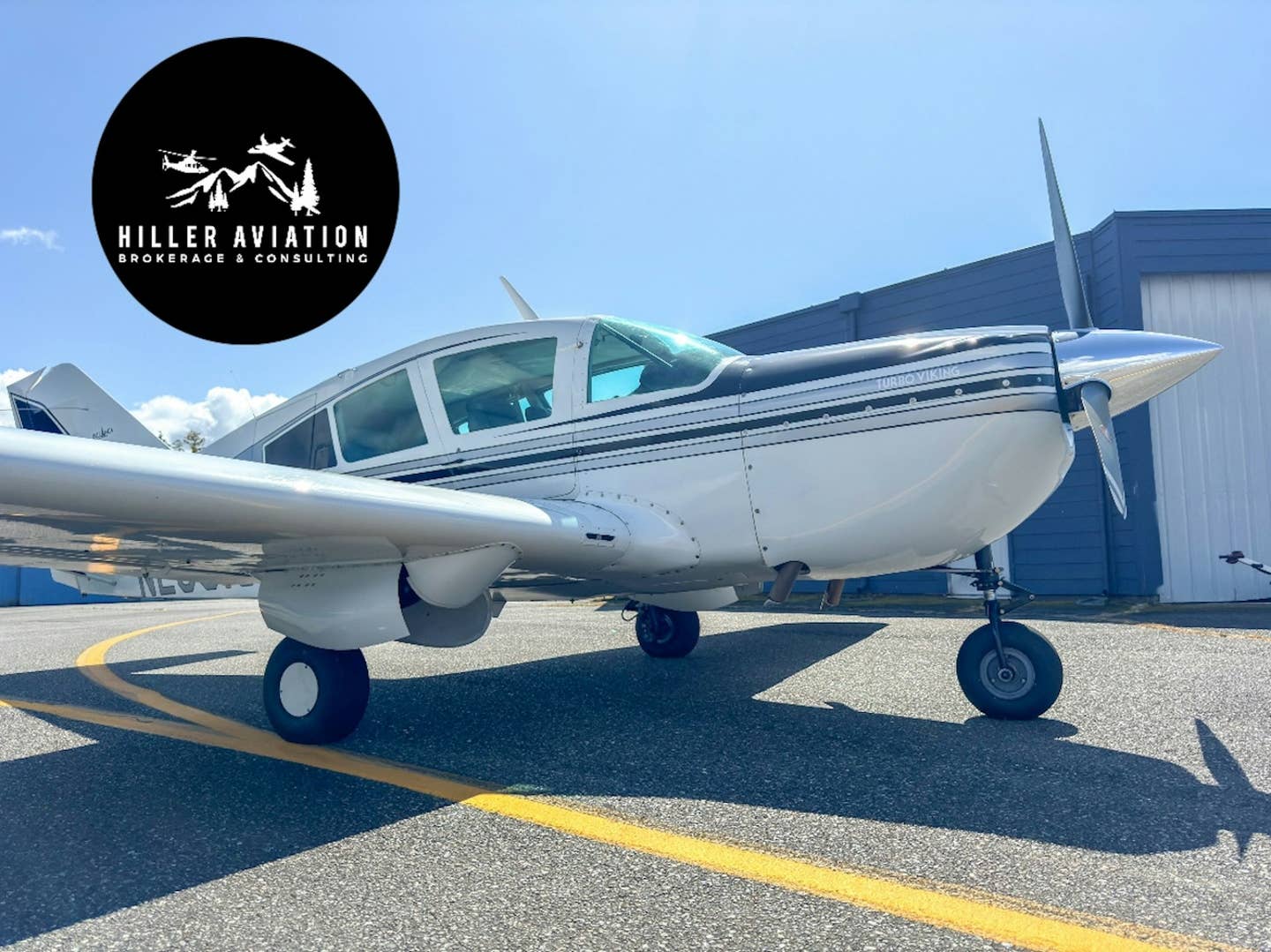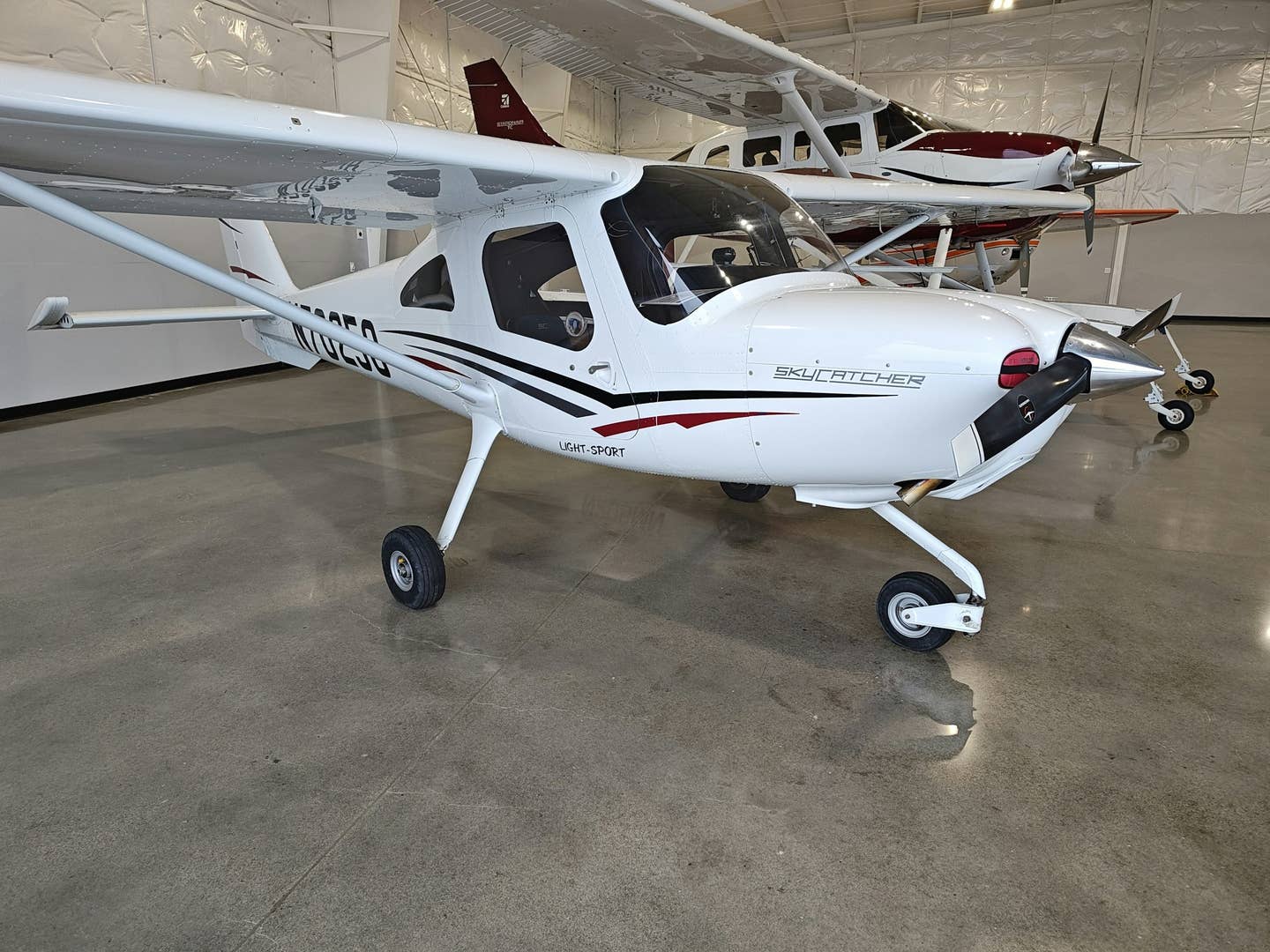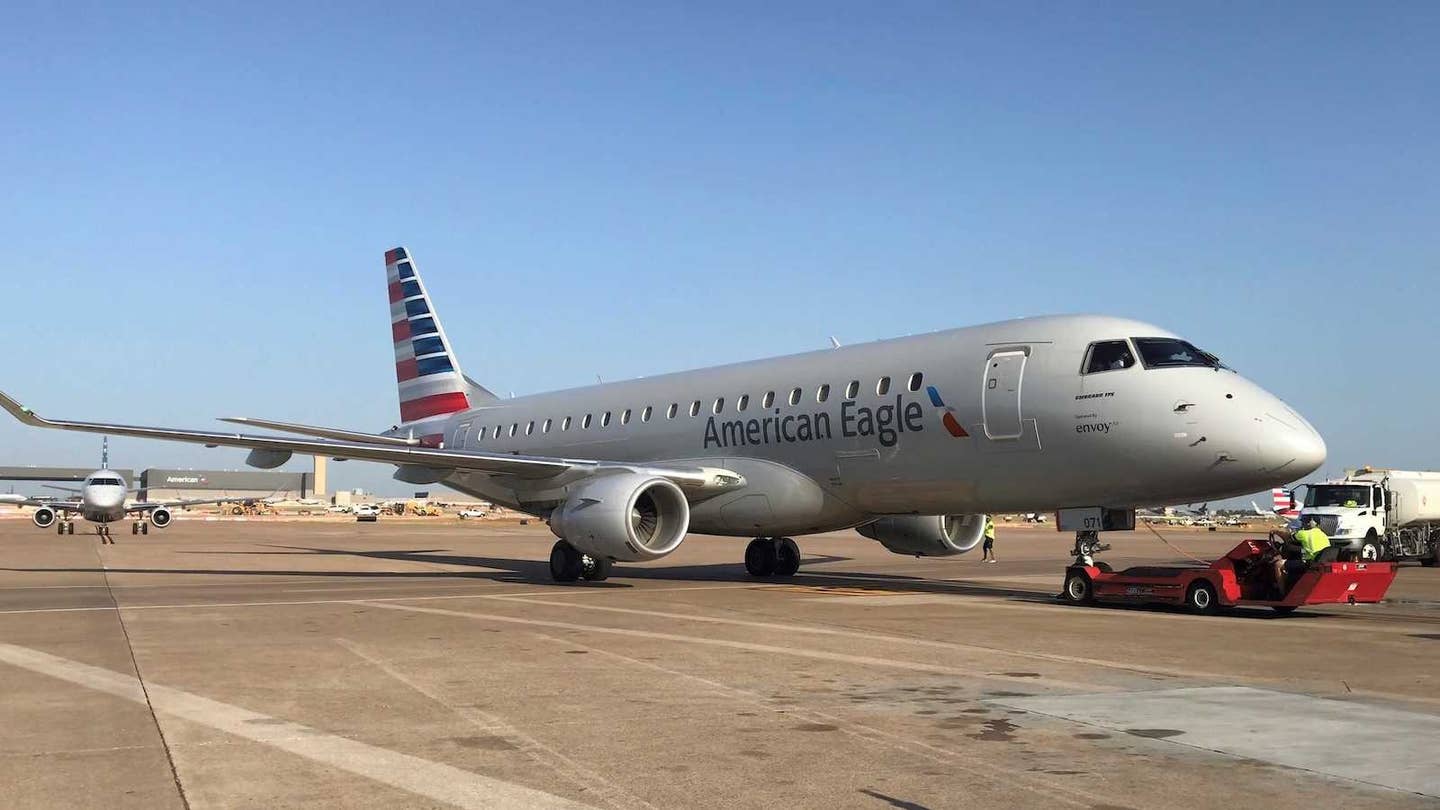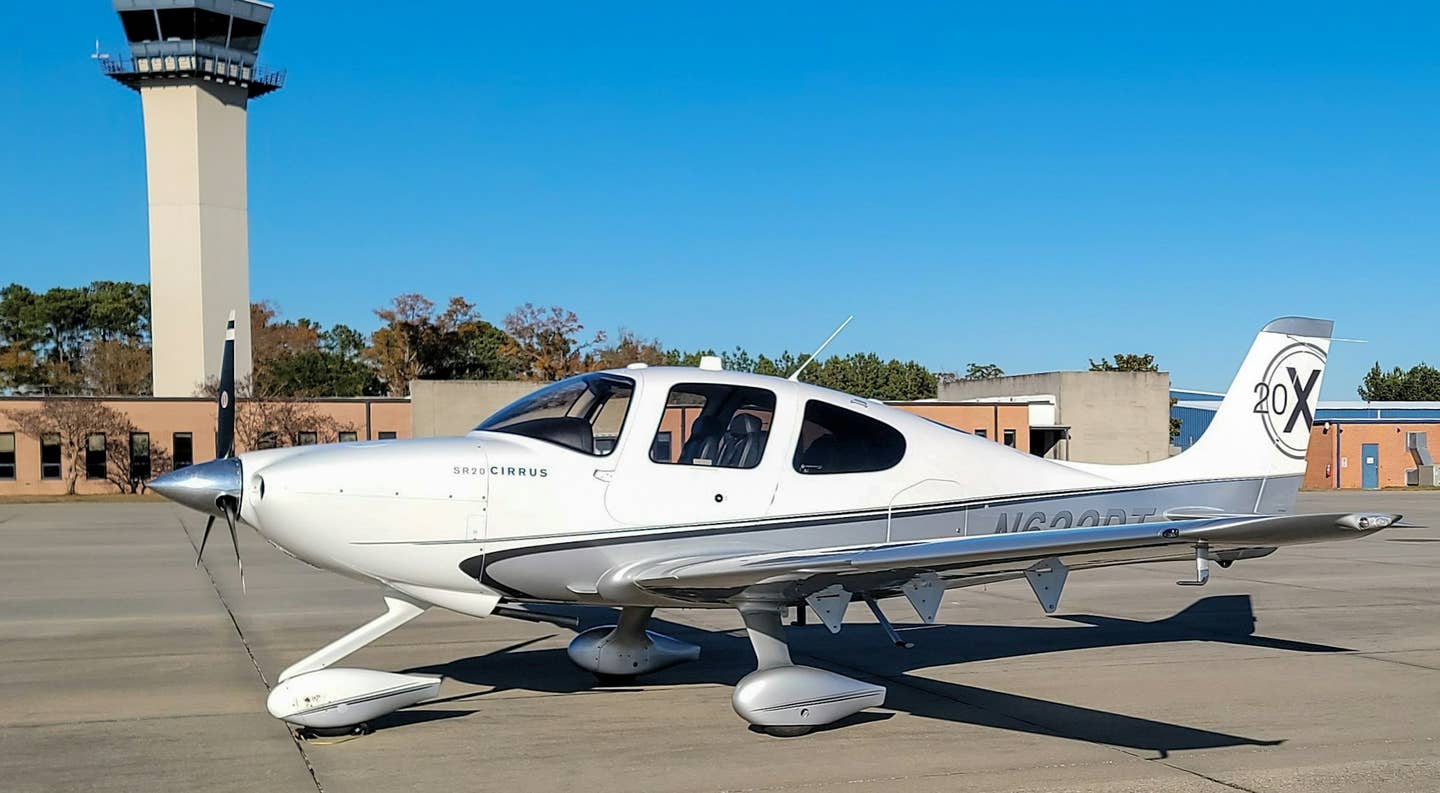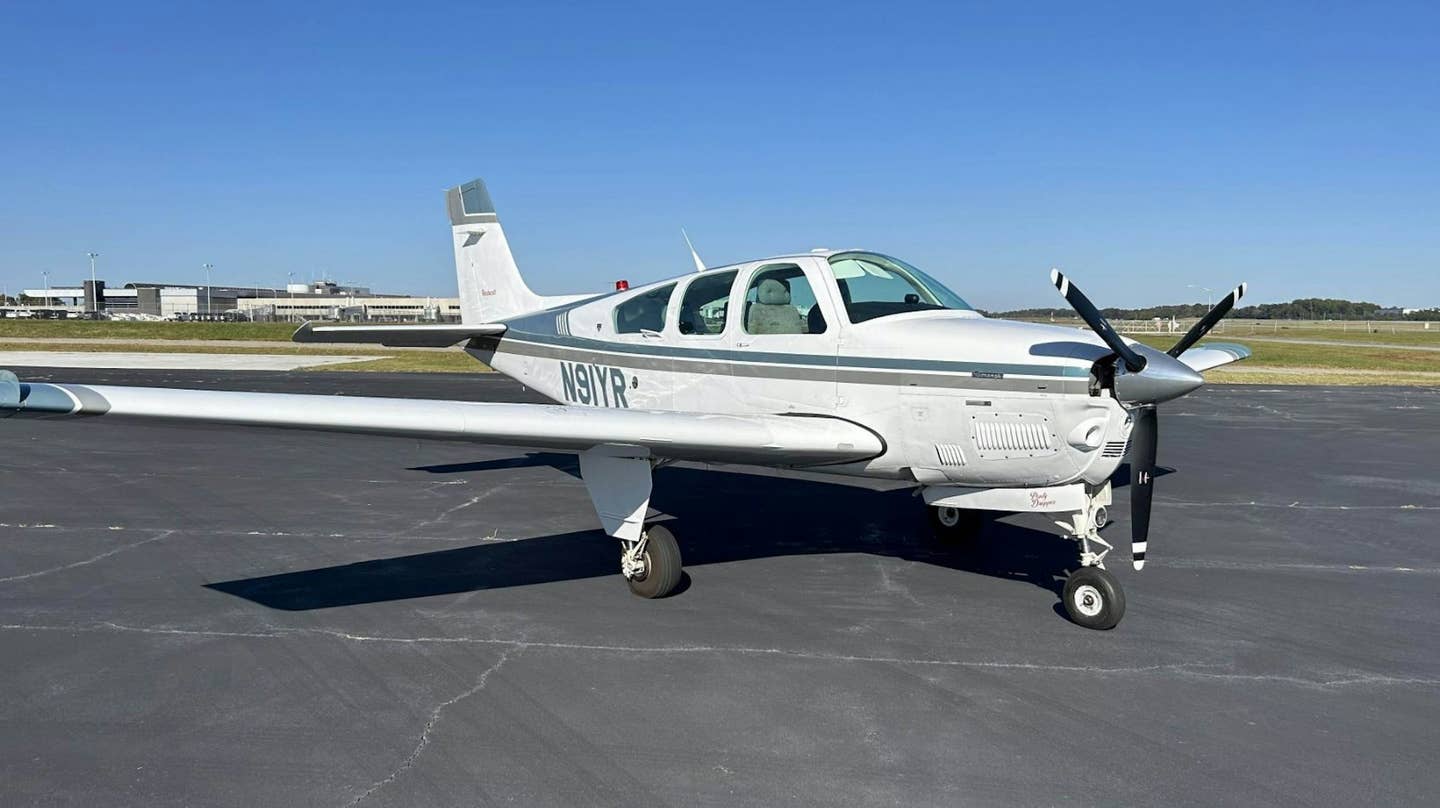
Sierra Super Centurion Robert Goyer
We leveled off at 5,500 feet, I set the power, and we watched the Texas Hill Country slide by below us. The three of us, Tom Canavera and Gary Buchanan from Sierra Industries and I, were heading over to Gillespie County Airport in Fredericksburg to grab a bite to eat at the regionally famous and ubiquitously named Airport Diner. It was a relatively short jaunt from Sierra Industries' headquarters in Uvalde, Texas, but it was long enough to let us get up to altitude and see the old 210 do what it does best: cruise in high style.
Except this felt more like a new 210 than an old one, if new 210s existed. With Sierra's modification, which it calls the Super Centurion, you get to enjoy that style with many of the safety features and amenities that pilots today have come to expect, as well as some improvements to the original design that Cessna either never offered or never got quite right.
The Super Centurion features Garmin glass, a host of aerodynamic modifications, a modern autoflight system and better paint and interior than when it came out the factory door back when Cessna built its singles in Wichita, Kansas.
It built a lot of them too. There's no denying that the Centurion, which was produced for more than 25 years and which has now been out of production for more than 25 years, holds a special place in the hearts of many pilots, and for good reason.
When it was introduced in 1957, the 210 was the flagship of the Cessna piston single lineup, which over the years has included some of the most popular airplanes ever built. At first, the Centurion was little more than a 182 with retractable landing gear — which isn't much of a knock — but it soon got its own identity, with its signature cantilevered wing, six-seat interior and more-powerful engine that made it a hot seller for Cessna for many years. There was, it goes without saying, a turbocharged version of the model that came along in the mid-1960s, and it, just like every turbocharged model the company has introduced, sold better than the original. A pressurized version, the P210, arrived in the late 1970s. Overall, Cessna built just fewer than 10,000 210s, an average of more than 350 a year. There are still a lot of these airplanes around, and they were mostly used as personal transportation airplanes, unlike 172s and even 182s, which were often used as training, rental or working airplanes. Consequently, most 210s have many fewer hours on them than other fixed-gear Cessna singles of the same vintage do.
More than in just about any other piston single, the difference in 210s from the start of its production life until the end of the line is very dramatic. The first airplanes were not particularly fast, and the later airplanes were pretty darn fast. And the difference between performance down low and at altitude is dramatic. So, it's impossible to generalize about performance other than to say that the 210 is a good transportation airplane that carries a good load.
When Cessna restarted production in the early 1990s, there was talk of it restarting 210 production, but I'd be surprised if that restart ever got very far. Compared with the 182 and 206 models, which feature strut-braced wings and fixed gear, the 210 would have been a great deal more expensive for Cessna to certify and to build.
A used Centurion, however, is a great value. These airplanes feature a mix of appealing capabilities, including good speed, impressive hauling ability, a comfortable cabin for four with the possibility of taking a couple of more people along in the two back seats, and the predictable flying manners that Cessna was and is famous for.
Scanning the aircraft sales sheets — it's a great time to buy used piston singles — sellers seem to be asking between $125,000 and $150,000 (and sometimes a bit less) for a late '70s to early '80s Centurion with a fairly low airframe time and a midtime engine. And those are asking prices. Earlier airplanes are available for even less, but do your research first to find out what you're getting and what the potential pitfalls are.
The Sierra Treatment
Sierra Industries owns dozens of supplemental type certificates for Cessna aircraft, from 150s to Citations. When it decided to update the low-time (2,500 hours total time) 1977 M-Model Turbo Centurion it already owned, it soon became clear that it could transform the airplane.
It started with an engine upgrade, a Continental Motors TSIO-520-R Black Edition from Victor Aviation. The engine runs smooth and strong — it's a 310 hp model — and burns an amount of fuel comparable to what the original TSIO-520 burned.
It's hard to say just what constitutes the "heart" of the upgrade, but the Garmin G500 flat-panel installation has to be high on the list. The more I fly the G600/500 system, the more I like it. It is compact, simple to operate and remarkably capable. Moreover, it's a terrific value. For the cost of the system, around $25,000 in the Sierra Super Centurion, you can taxi in with an airplane that has a panel that is, let's face it, pretty dated and taxi out with one that has most of the latest capabilities.
To refresh your memory, that includes, in addition to the glass displays, built-in solid-state ADAHRS (which in my book is one of the best safety investments you can make) and HSI/ADI with airspeed, altitude and VSI tapes, true airspeed, wind direction and velocity vector. Plus, you have available synthetic vision, Garmin's remarkable computerized display of the outside world put right on the PFD. There's also built-in terrain awareness, which displays both on the MFD and the PFD with synthetic vision shown.
You also get as part of the package an excellent MFD, with moving map, XM Weather, Garmin instrument charts, autopilot altitude preselect interface and display of traffic — and it displays on the synthetic vision of the PFD.
When paired with a WAAS navigator (or two), the G500 can display vertical nav for WAAS approaches. The Sierra 210 demonstrator has the unusual configuration of a WAAS-capable Apollo CNX80 (virtually the same unit as Garmin's GNS 480) and a GNS 430W.
Sierra did a beautiful job on the panel design and on the actual panel too. It placed the required backup instruments along the left margin and cleaned things up with the installation of a new panel cut expressly for this airplane. The effect, as you can see from the panel-shot composite mockup, is dramatic — the displays, by the way, were added in Photoshop and don't represent an airplane sitting on the ramp, which is what it was when I photographed it. In any case, the panel looks nothing like the museum collection of analog instruments that is your typical 210 installation. Instead, it's a thoroughly modern upgrade that gives the pilot almost all the utility of a G1000 retrofit (if such were available for this airplane) in a much more affordable package.
With an upgrade to the G500, you can integrate altitude preselect into the PFD, a very tempting option. The S-Tec 55X, which was already installed in the Turbo 210 before it got the avionics upgrade, is a fine autopilot for this class of airplane. A rate-based unit, it gives you acceptable performance and backup flight-control capability at a price that handily beats attitude-based flight-control systems. A lot of 210s, however, will have already gotten an autopilot upgrade, and the G500 will indeed interface with many aftermarket autopilots from major manufacturers.
Engine Gauges Consolidated
The surprising star to me was the J.P. Instruments EDM-900 digital engine display that you can see installed on the right-hand side above the right-seater's yoke.
In the Turbo 210, the EDM-900 features on its tape-style display oil temperature and pressure, fuel quantity and flow, volt and amp meters, and outside air temperature. The round-gauge portion shows you rpm and manifold pressure, one above the other, so you can monitor power with one easy glance. Below that are side-by-side EGT/CHT (exhaust gas temperature/cylinder head temperature) monitors, with a color-coded individual-cylinder bar graph representation, so it's easy to keep track of engine health, again with a glance.
This was the first time I'd had the chance to fly with the EDM-900, and I came away impressed by its design and performance. The unit goes for around $11,000 with TIT (turbine inlet temperature) probes, and many owners will think that's a good deal just for the aesthetics of it. Instead of having antique round engine instruments cluttering up the newly Garminized flat-panel digs, the JPI display puts everything together in one tidy and attractive package.
As is the case with a PFD, the LCD EDM-900, for those more comfortable with steam gauges, will take a little getting used to. On rotation from Uvalde, I was working hard to set power in the turbo (turbo-normalized this Turbo 210 is not) while keeping the airplane within shouting distance of the centerline and rotating at or near the proper speed. Even though I regularly fly a Cirrus with electronic instrumentation, my eye kept looking for round gauges to help me keep the turbo from overboosting. I was glad to have Gary along in the right seat to help out.
That said, I found the transition to be an easy one. By the time we were heading back from lunch, I had about an hour of experience with the JPI, and I was able to monitor the gauges, set the power and lean the airplane for cruise using the 900's nice LeanFind mode.
The EDM-900 is a perfect fit for the Garmin G600/500 — it would be a great match as well for Aspen's LCD instrumentation — because it gives you what the new compact LCD instruments don't: LCD engine gauges at a good price point and with a presentation that's consistent with the flat-panel flight instrument and multifunction display.
Slower and Faster
By single-engine standards, the 210 is a big airplane, and it feels that way. At the same time, it flies like a Wichita Cessna single, and with its big, high-lift wing, it has a lot of life left in it as you're touching down at the end of a long trip. It's always nice to have that extra control, but it's especially welcome when operating at a maximum weight and from short strips.
With its R/STOL High Lift upgrade, Sierra stretches the envelope even further, creating an airplane that flies even more slowly, which is a great improvement for pilots who want to operate out of smaller strips. With the Sierra R/STOL mod, 2,000-foot strips are well within the airplane's limits, though pilots will have to get used to flying the 210 at the much lower approach speeds outlined in the R/STOL manual supplement.
Sierra claims that the mods not only improve low-speed performance but also reduce landing and takeoff distance by as much as 47 percent while conferring higher cruise speeds and better hot and high performance. Those are big claims, but everything I saw seems to support them.
The mod has a few basic features. Chief is the modified R/STOL leading edge, which is a slightly drooped cuff that adds lift at slow speeds without adding drag at cruise. Additionally, the package includes drooped ailerons that provide additional aileron authority when the flaps are deflected, as well as a bit of reflex (or "up") deflection in cruise to enhance cruise speeds. There is also a series of aerodynamic fences, three on each wing, to stop airflow spanwise and improve lift even more. Another nice feature is automatic trip with flaps, so when you select flaps on approach, the interconnected system automatically adjusts the stabilizer to accommodate the change in pitch. It's very effective, and it took me a bit by surprise. As I selected flaps, I instinctively went to trim but found that I didn't need to. Some surprises are pleasant. The R/STOL kit sells for $23,000 installed.
As much as I like the aero mods, the real gem is the No Doors main and nose landing-gears upgrade, which removes the troublesome 210 gear doors and hydraulic system for a "no-door," no-hydraulics system that doesn't seem to cut cruise speed a bit. I seldom give a completely unconditional recommendation, but in this case, it's a no-brainer. At around $6,000 total installed for doing both the main and the nose gears, it is an upgrade that will almost certainly pay for itself, if not the first time you have to bring the airplane into the shop, then surely the second time. Indeed, a lot of 210 owners get the mod when they arrive at the shop to get gear-door issues fixed. True, it's not as attractive in flight, but think about it: Who sees you when you're up there anyway?
Flying the Sierra Super Centurion
For pilots looking for a good value in an existing transportation airplane that they can upgrade, the Centurion, as I said, has much to offer.
In many ways it's two airplanes in one, a low and slow Cessna and a versatile cross-country machine, and Sierra's mods have done nothing to change the feel of it. Many 210 owners like the solid and predictable way the 210 feels, and I can see why. I do like the cabin, which, while not quite as roomy as my Cirrus, is plenty comfortable. I was just a bit closer to Gary than I would have been had we been in the Cirrus. The headroom is good, and Tom, sitting in back, looked plenty comfortable as he enjoyed the scenery and took photographs of the displays with my Pentax while we bumped along. The two far rear seats are small, but big enough to accommodate adults. I've seen it done.
The visibility from the 210 is good enough, even though I had to crank my seat pretty high to be able to see well over the nose. Like every high-performance piston single, the T210 is a fairly loud airplane. I was glad to have brought the Bose.
Because it was a short trip, we stayed down at 5,500 feet, and it was bumpy. Down at non-oxygen altitudes like this, the Turbo 210 is a 165-knot cruiser, which is 10 to 15 knots slower than the new-airplane competition is but faster than is a new Cessna 182 or Cirrus SR20. In the mid-teens, where some turbo owners fly, the Turbo 210 is comparable to the nonturbocharged Cirrus SR22 or Cessna Corvallis 350.
Then again, none of the new competition can compete with the 210 for load-carrying ability. At 3,800 pounds maximum takeoff weight, the 210 is a big airplane. It's also an excellent hauler. With tanks full — which gives you more than 800 nm of no-wind range — you can carry four 200-pound adults and their bags or four adults plus a couple of kids or smaller adults. Together, the rear seats and the rear baggage area with outside-only access give you some flexibility in how you load the airplane.
Is a 1977 Turbo 210 a true six-place airplane? That depends, I guess, on what you mean by "true." You can get six adults in the airplane with enough fuel to go somewhere meaningful, which is a lot more than you can say about many other six-seaters. But the two back seats are tight no matter how you cut it. The good thing is that the 210 feels a lot lighter and is easier to land when the CG is toward the back of the envelope.
Sierra's R/STOL High Lift kit does indeed seem to give the Centurion some extra margin at the low end. Flying my approaches at Cessna's book speeds, I was just too fast. Moreover, once in the flare, I could feel the aileron control well down into ground effect in a way I haven't felt in other 210s.
No doubt the right Cessna Centurion represents an excellent used option, though with Sierra's extensive refurbishment, the price — $385,000 for this particular low-time airplane — doesn't sound cheap. But considering all it offers, it's sure to command some lingering looks from pilots considering buying new but working out in their minds just what more — and what less — they'd be getting for that extra $200,000.
For more information about the Sierra Super Centurion or any of its numerous other mods, visit Sierra's site, sijet.com.

Sign-up for newsletters & special offers!
Get the latest FLYING stories & special offers delivered directly to your inbox

